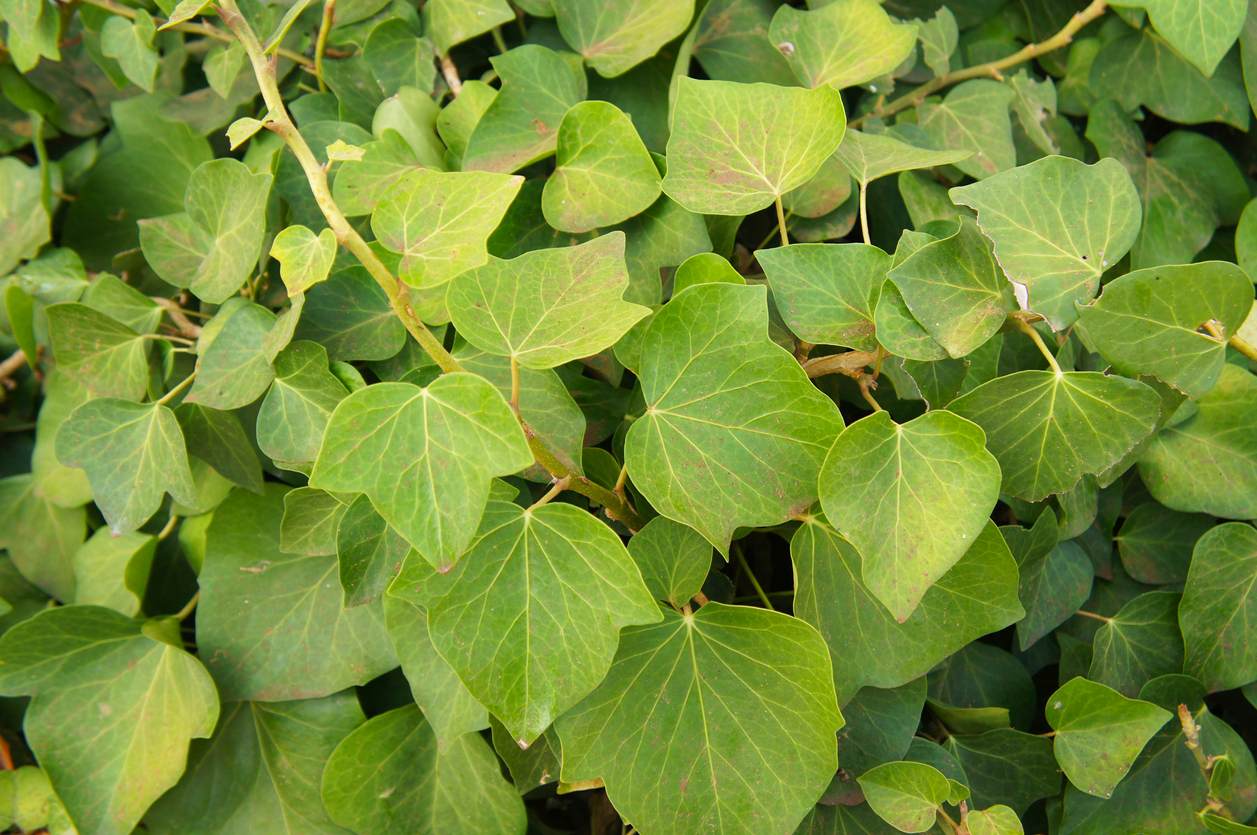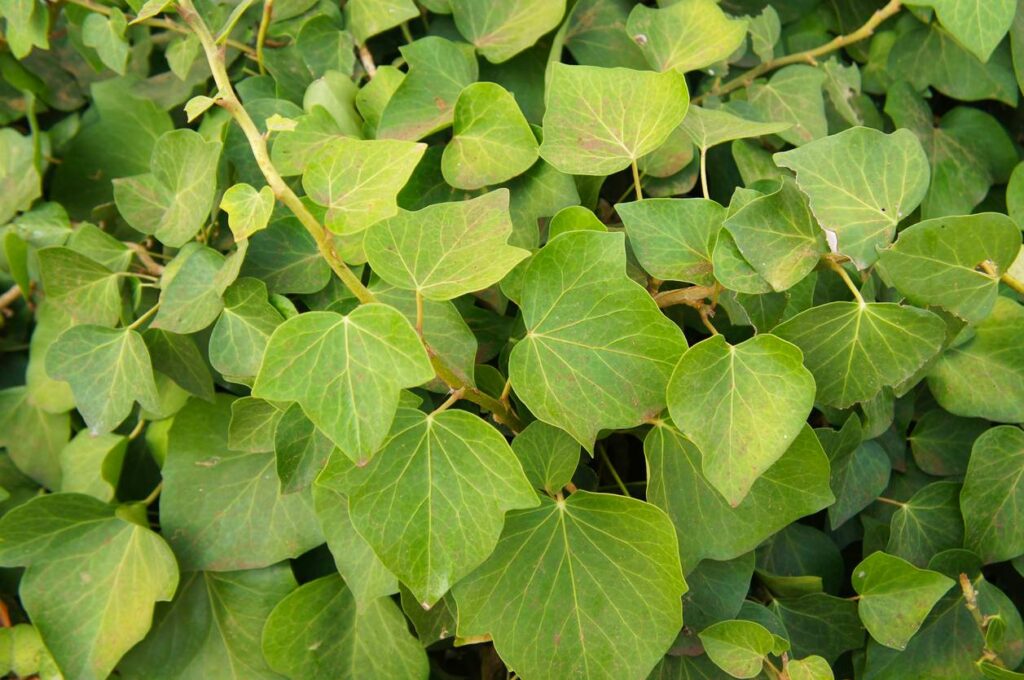Algerian Ivy Care: How To Grow Algerian Ivy Plants
Fewer plants will grow faster and with more enthusiasm in your garden as the Algerian ivy. In fact, if you have a barren batch or an unappealing shed you want to hide, you couldn’t find a better plan than the Algerian ivy to cover it in record time. As adept climbers, they grow just as well in hanging baskets as in a planting container or next to a wall or a fence.
One of the main reasons gardeners plant Algerian ivy is its ability to cover just about any space and turn a drab looking corner into a lush green landscape. But you can also plant it on slopes to prevent erosion. So how safe is Algerian ivy as a climbing vine? And what do you need to know about it before you introduce it to your garden?
What is the Algerian Ivy
The superfast growth rate of the Algerian ivy (Hedera canariensis) isn’t the only thing that sets out from the rest of the litany of evergreens you find around many gardens and nurseries. This variegated vine can grow just about anywhere including in coastal areas thanks to its high tolerance to salinity.
The leaves of the Algerian ivy are lobed, fleshy, and shimmer in the sunlight. The new leaves are light green and turn into dark green as they mature. Some varieties, such as Variegata, have white markings that cut through the lush green leaves for more ornamental value. The stems of the leaves are usually red and offer a nice backdrop for the occasional light green flowers. Your Algerian ivy might not flower at all, but when they do, they become a sight for sore eyes.
Native to the Canary Islands and North Africa, it grows well in warm climates as well as tropical habitats. With so many cultivars to choose from, you’re bound to find the one that creates the tropical landscape you’re going for. If you have deciduous trees in your garden, this evergreen vine can be the perfect companion to resolve that stripped tree look in the winter.
You can also grow it as a stand-alone climber near walls to make a green and bold statement with its lush foliage. You can train it to climb walls, fences, and hedges with little effort. Under a covered patio, it climbs on the walls and spreads across the roof giving you a cozy green setting.
How to Grow Algerian Ivy
Before you consider planting the Algerian ivy in your garden you should consult with the local regulations in your state. California, among other states, treats this vine as an invasive species and prohibits planting it. If it’s not against the rules, and you’re ready to bring this evergreen climber to your home, then you can follow these steps.
- The best time to plant the Algerian ivy is either in the fall or in the spring right after the last frost has passed.
- Choose a shaded spot in your garden that doesn’t get a lot of direct sunlight. A northern or eastern-facing location will do just fine.
- The soil needs to be moist for best growth. This works fine for any area that is always moist and nothing else grows there.
- Prepare the soil beforehand. Using a hoe or spade, break the top 12 inches of the soil to make it loose, add a layer of organic compost about 3 inches thick, and mix well.
- Dig a hole in the soil deep enough to take the whole root ball of the plant and a few inches wider.
- Drop the Algerian ivy in the hole and fill it with soil. Make sure the roots are completely covered. Pack the soil gently.
- If you’re planting more than one ivy, space them about 1 to 2 feet apart to create a thick wall of foliage. You can space them further if you don’t need a thick coverage.
- Water the ivy immediately after planting and keep the soil moist.
- Wait for the soil to go dry between irrigations.
- Cover the soil with mulch (straw or compost will do) to help with water retention.
Algerian Ivy Care
Apart from the hiccup with the local agricultural authorities, there’s nothing complicated about growing the Algerian ivy. The same applies to its maintenance and care. There’s a reason it’s considered an invasive species in some states. It’s not just that it grows fast, nothing seems to stop it from growing and spreading its dark green shades everywhere.
Water
The water needs of the Algerian ivy vary depending on the weather and soil condition. In the early stages of the vine’s growth, you need to water it every day to keep the soil moist. Once the roots establish, you can cut back on watering to once every 2 or 3 days in the hot summer months. Make sure the soil goes dry before you water it again. If the ivy is growing in clay soil, you won’t need to water it so often. But in sandy and well-drained soil, it would need more watering.
In general, you should avoid aiming the water at the root of the plant. Don’t sprinkle water on the leaves or foliage either since that could encourage fungal infestation. The soil should get thoroughly wet with every irrigation. Then wait for the two 2 to 4 inches of the soil to go dry before you apply more water.
Temperature
The Algerian ivy has USDA hardiness zones between 6 and 11. This makes it suitable to grow in many climates and weather conditions. From moderate to warm and tropical, it is a hardy plant that can handle the heat better than chilly weather. You won’t have to worry about protecting it against the direct sunlight or keep it inside when the weather gets cold. This ivy can take care of itself and handle the weather like a champ. The only exception is if the winter gets exceptionally cold with freezing wind. A sheltered area would help your Algerian ivy survive the harsh winter.
Fertilizer
For a plant that grows so fast, you might wonder why you’d need to use fertilizer at all. The reasons vary but in most cases, you would want your Algerian ivy to look its best and its variegated leaves always green and lush. That’s where a nitrogen-high fertilizer comes in. The best times to fertilize it, are in the early spring and summer. This encourages the growth of the leaves and if you’re lucky to have flowers, they will be bigger and brighter blooms. Refrain from adding fertilizer in the late summer or fall since that would encourage new offshoots that get damaged in the frost. If you use organic compost and mulch this will reduce your need for fertilizers.
Pruning
Since we’re talking about a vine that grows faster than anything you probably have planted in your garden so far, that brings up the topic of pruning. If your Algerian ivy flowers, then you have to remove those flowers when they wilt or fade. You need to do that to save the plant’s energy in making seeds that you don’t need anyway.
Feel free to prune the leaves and branches as much as you like and whenever you feel the need to do that. The Algerian ivy is an ornamental plant and as such, you need to run your pruning shears through it liberally. As with fertilizer, avoid pruning in the fall since that results in new growths that won’t survive the winter. Many horticulturalists recommend you keep the ivy intact throughout the winter and prune it in the spring to prepare it for the new growing cycle.
Growing Algerian Ivy in Containers
Even though these are climbers that don’t like to be moved around, you can still grow the Algerian ivy in containers. This will help you avoid the pitfalls of freezing temperatures and chilly winds. It’s recommended that you winterize your ivy by moving them to a sunny spot preferably one that is next to a solid wall. It will protect them against the wind and store warmth that keeps them from freezing. Don’t place the container near gutters or running water since the increased moisture would make it more likely for the vine to freeze over out there exposed to the elements.
Toxicity of Algerian Ivy
Many ivy species are toxic and unfortunately, the Algerian ivy is one of those toxic ones. Be careful when handling the leaves as when you prune or plant it. You should always wear garden gloves and avoid touching it with your bare hands as this could lead to irritation. The same thing applies to ingesting the leaves or the flowers. They can cause stomach aches and trouble with the digestive system.
If you have pets, then try to keep them away from the vines of this ivy. Although dogs and cats don’t find the leaves particularly munchy, rubbing against the leaves could make their skin itchy. Worse still, their fur would transport particles of the vine into the house where they would cause skin irritation to anybody they come in contact with.

